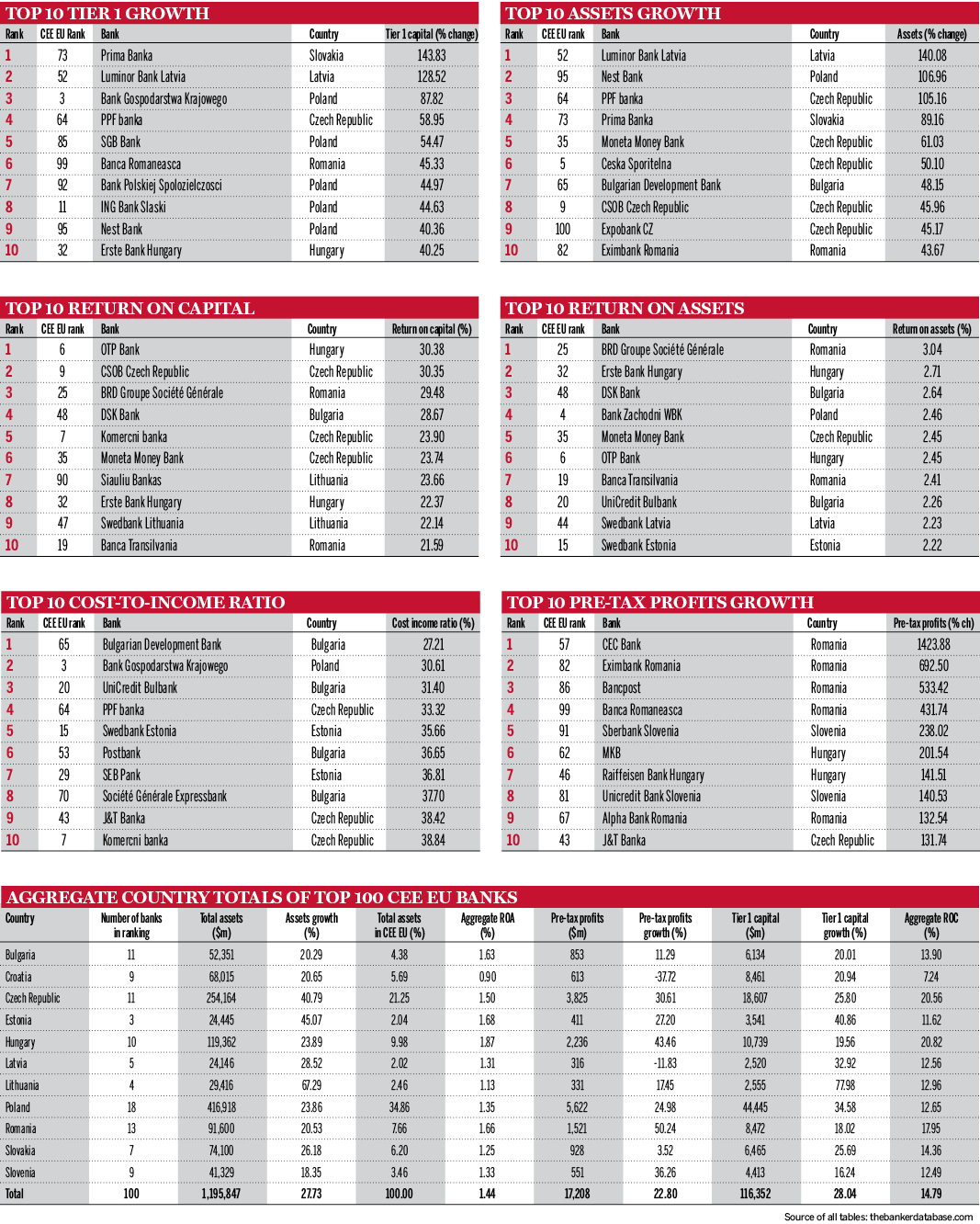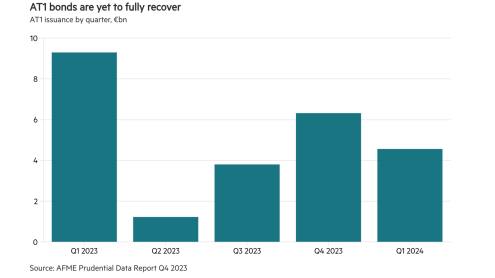Polish lenders continue to lead the way in The Banker’s 2019 rankings of the largest banks in central and eastern European (CEE) EU member states. Four of the top five institutions and five of the top 10 are Polish, reflecting the country’s position as the biggest market in the region. Poland accounts for 34.9% of overall assets in the ranking, nearly one-third of pre-tax profits and 18 of the top 100 banks.
PKO Bank Polski is the leading bank by Tier 1 capital in the region. Its hefty Tier 1 capital base of $9.3bn reported in 2017 was almost twice that of its nearest rival, compatriot Bank Pekao. Pekao is now state controlled, following the sale of UniCredit’s stake in the bank to a government-owned insurance company and the Polish Development Fund.
The State Development Bank, or Bank Gospodarstwa Krajowego, ranks third overall in the rankings, up from sixth after achieving among the highest Tier 1 capital growth in the region in 2017.
Mergers stall
There has been expectation of a wave of consolidation in the Polish banking market thanks to higher capital requirements, rising costs and lower profit expectations – as well as active government policy. However, progress on a merger between Pekao and Alior Bank – Poland’s ninth largest – has stalled, and a planned 'super-merger' deal bringing together Pekao and PKO to create a regional giant is also off the cards for now. While the government is seen to be supportive of stronger locally owned banks that can start to acquire assets abroad, many Polish banks seem content at present to focus on the large domestic market.
Elsewhere in the region, Hungary’s biggest bank, OTP, has been on a buying spree, securing deals in 2018 to acquire many of the regional subsidiaries of French bank Société Générale, following a takeover of Serbia’s Vojovodjanska Banka. It now looks set to acquire Slovenia’s third biggest lender, Abanka, following a €300m bid in March 2019. However, the Hungarian bank’s bid to acquire mid-sized Romanian counterpart Banca Romaneasca ran into regulatory difficulties.
OTP ranks sixth overall in the region, with Tier 1 capital of just over €4.1bn in 2017, and its return on capital, at 30.4%, was the best in CEE.
Czech banks’ strength
The Czech Republic was the second largest market in CEE by assets in 2017, accounting for 21.3% overall, and about 22% of overall pre-tax profits. Czech banks enjoyed a bumper year, with assets growing by 40.8%, and pre-tax profits up 30.6%.
The country’s largest bank, Ceska sporitelna, is owned by Austria’s Erste Group, which owns a range of subsidiaries across the region, including Romania’s second biggest bank, Banca Comerciala Romania (BCR). BCR has been overtaken as largest lender in the country by locally owned rival Banca Transilvania, which has grown in recent years, partly thanks to the acquisition of the local subsidiaries of Volksbank and Eurobank.
Eurobank is one of several Greek institutions realigning its presence in the region in the wake of Greece’s financial crisis. In most cases, these are sales by Greek institutions under EU-mandated plans. In 2017, the National Bank of Greece sold its Bulgarian subsidiary to Belgium’s KBC, but in October 2018 asked the EU for more time to sell subsidiaries elsewhere, including in Romania. In 2018, Piraeus Bank completed the sale of its Romanian business to US private equity investor JC Flowers & Co, and agreed to sell its Bulgarian branches to Eurobank.
Foreign interest
Foreign-owned subsidiaries continue to dominate the region, accounting for 66 of the Top 100 banks, and 67.6% of pre-tax profits.
Overall, 2017 saw a year of very respectable growth for the region’s banks. Profit growth for the Top 100 dropped to 23% from 38% in The Banker’s 2018 ranking, but this still represented a good performance given headwinds from the international economy, while asset growth came in at just under 28%. Particularly notable performers included Romania’s CEC, which saw pre-tax profits soar by more than 1400%; four of the top five banks by profit growth were Romanian.
The Latvian branch of Baltic-wide Luminor Bank saw the strongest asset growth (140%). In 2018, US fund Blackstone acquired a 60% stake in Luminor for €1bn from previous owners Nordea and DNB, which had previously consolidated their operations in the region to create the bank. The deal is the largest majority stake acquisition of a universal bank by private equity globally over the past decade, and is a positive sign for the Baltic banking market, which has been rocked by money-laundering scandals.












